The research paper published by IJSER journal is about A technique for Carrier frequency offset estimation in OFDM- based systems for Frequency-Selective Fading Channels 1
ISSN 2229-5518
A technique for Carrier frequency offset estimation in OFDM- based systems for Frequency-Selective Fading Channels
Navid daryasafar
Abstract— This paper discusses the effects of frequency offset on the performance of orthogonal frequency division multiplexing (OFDM) digital communications. The main problem with frequency offset is that it introduces interference among the multiplicity of carriers in the OFDM signal. The aim of this survey is to investigate Carrier frequency offset estimation method in based OFDM systems. According to this, using maximum likelihood estimation algorithm (MLE), the carrier frequency offset (CFO) can be estimated. A maximum likelihood estimation (MLE) algorithm is derived and its performance computed and compared with simulation results.
Keywords — Multi-Input Multi-Output systems, carrier frequency offset (CFO), Synchronization, MLE algorithm.
1 INTRODUCTION
Orthogonal frequency division multiplexing (OFDM) techniques has widely been considered to be a very promising strategy to enhance data rate, capacity, and quality for broadband wireless systems over frequency-selective fading channels [1]. Along with this strategy, oscillator jitter and Doppler shift make carrier frequency offset (CFO) that degrades the performance of system remarkably [2].
A multi carrier orthogonal modulation system , using the immediate Fourier diversion technique creates interest range and changes the switch frequency to several flat sub channels; But lack of source and target and outbreak of delay by the channel decreases the function of this system. In other words, this kind of system has a high sensitivity toward time and frequency delays.
The frequency-selective fading MIMO channel can be transformed into a set of flat-fading MIMO channels by using Orthogonal Frequency-Division Multiplexing (OFDM). This transformation achieves a high capacity at a low cost of equalization and demodulation [3], [4]. However, just as with the SISO-OFDM, MIMO-OFDM systems too are sensitive to frequency offset. Many SISO-OFDM frequency offset estimators have been proposed [5]–[7].
Navid daryasafar is with Department of Communication, Bushehr Branch, Islamic Azad University Bushehr, Iran.(phone:+989173730829 ; e-mail: navid_daryasafar@yahoo.com).
The frequency offset in the OFDM symbols represents the frequency shift between the transmitted and the received symbols. This case arises as a result of frequency change in the receivers during transmission. As a result of this
frequency offset problem, there arises a condition where the orthogonality of the individual carriers is affected. Thus the
inter symbol interference (ICI) arises.
There are two deleterious effects caused by frequency offset;
one is the reduction of signal amplitude in the output of the filters matched to each of the carriers and the second is introduction of IC1 from the other carriers which are now no longer orthogonal to the filter. Because, in OFDM, the carriers are inherently closely spaced in frequency compared to the channel bandwidth, the tolerable frequency offset becomes a very small fraction of the channel bandwidth.
Further, in the second chapter the MIMO-OFDM systems are introduced. In the third chapter, synchronizing methods are introduced. In the fourth chapter the maximum likelihood estimation(MLE) algorithm is presented in order to estimate CFO and in the fifth chapter the signal model with frequency offset in MIMO-OFDM systems will be described and finally, the simulation results will indicate the performance of suggested method.
2 INTRODUCTION OF MIMO OFDM SYSTEMS
In a traditional wireless communication system, provided that the bandwidth is constant, there is no possibility of increasing the sending rate of information. In this kind of situation, only diversity methods can be used to improve the quality of revealing. In designing communication systems, bandwidth, information sending rate and software-hardware complexities are the important parameters. To expand the new generation of communication systems, methods such as MIMO, OFDM and integrating them together as MIMO- OFDM, are suggested. OFDM is used in numerous wireless
IJSER © 2012 http://www.ijser.org
The research paper published by IJSER journal is about A technique for Carrier frequency offset estimation in OFDM- based systems for Frequency-Selective Fading Channels 2
ISSN 2229-5518
transmission standards nowadays (DAB, DVB-T, WiMAX IEEE 802.16, ADSL, WLAN IEEE 802.11a/g, Home Plug AV or DS2 200 aka "Home Bone"). The OFDM modulation transforms a broadband, frequency-selective channel into a multiplicity of parallel narrow-band single channels. A guard interval (called Cyclic Prefix CP) is inserted between the individual symbols. This guard interval must be temporally long enough to compensate for jitter in the transmission channel. Transmitted OFDM symbols experience different delays through the transmission channel. The variation of these delays at the receiving location is called jitter. The appearance of inter-symbol interference (ISI) can thus be prevented. It has been shown in that OFDM can be favourably combined with multiple antennas on the sending side as well as the receiving side to increase diversity gain and/or transmission capacity in time-varying and frequency-selective channels.
The high intrinsic resistance of OFDM against the ISI event
and its suitable function against fading destructive event,
besides the high rate of information sending of MIMO, creates
a very efficient complex in accession toward the fourth
generation of wireless communication’s demands. Like OFDM
systems, the MIMO-OFDM systems have a great deal of
sensitivity toward synchronization errors. Again, according to
the increase in number of unknowns, estimating the channel in these systems are more complex than estimating channel in
one antenna systems [8]. Diagram block of one kind of MIMO- OFDM systems, is shown in the figure1.

Fig 1.MIMO communication system with M Tx antennas and N Rx antennas
According to the figure, the information in each antenna is
The most important intrinsic restriction of the OFDM technique is its high sensitivity toward synchronizing errors. The first creator factor is called the asynchronousity of carrier frequency offset (CFO). This causes the loss of orthogonality between subcarriers and outbreak of interference between carriers. Another factor of asynchronousity is inequality of sending and receiving rate of samples precisely, which is introduced as sampling frequency delay. The proposed synchronizing algorithms for OFDM based systems are categorized to the following two main groups [13]:
A. Before FFT algorithms
The above-mentioned algorithms are divided to two groups of input based algorithms and non input based algorithms as follows:
Non input based algorithms: this group of algorithms estimates the synchronization parameters using the special structure of OFDM symbols. This group is also called cyclic prefix based methods [14] and [15].
Input based algorithms: this group of algorithms uses the educational symbols sent in information frames to estimate synchronization parameters [16], [17], [18] and [19].
B. After FFT algorithms
The algorithms of this group are also categorized in two groups of pilot based algorithms and direct decision algorithms. In comparing the two algorithms, before FFT algorithms are faster than after FFT algorithms, but after FFT algorithms has a higher throughput spectral.
4 MAXIMUM LIKELIHOOD ESTIMATION(MLE)
ALGORITHM
Since the intercarrier interference energy and signal energy both contribute coherently to the estimate,the algorithm generates extremely accurate estimates even when the offset is great to demodulate the data values.The estimation error is insensitive to channel spreading and frequency selective fading.
The transmitter sends X(K) data for K=0,<,N-1:







sent after IDFT actions and addition of (CP) cyclic prefix. Each 
receiver antenna receives sum of noises and signals sent by the
transmitter’s antenna. In each receiver antenna the revealing is
done after removing CP and DFT actions.
3 SYNCHRONIZATION METHODS
According to the surveys which have done until now, the first article with title synchronization in MIMO-OFDM systems has been published by Mody and Stuber in
2001.[9,10].In those articles, Mody and Stuber generalized synchronization algorithm, proposed by Schmidl , Cox[11],for OFDM systems with one sender antenna and one receiver antenna to MIMO-OFDM. Zelst and Schenk in source[12] with considering all the necessary changes in synchronization algorithm, channel estimation,<,have generalized the OFDM based standard of IEEE-802.11a to MIMO .
Adding the cyclic prefix(cp) and considering carrier frequency offset estimation, the r(n) vector is formed as following:










Finally, we remove cp:





To estimate the carrier frequency offset of r(n) vector, r1 and r2 vectors are formed as follow:
IJSER © 2012 http://www.ijser.org
The research paper published by IJSER journal is about A technique for Carrier frequency offset estimation in OFDM- based systems for Frequency-Selective Fading Channels 3



ISSN 2229-5518










And






Taking angle() of both sides of the equation




Assuming d(n)=s(n)*h(n) and performing some calculations we have:



 –
–






–


So, the frequency offset  is,
is,



∆ 
5 SIGNAL MODEL WITH FREQUENCY OFFSET



Finally the carrier frequency offset estimation is performed as follow:




4.1 Frequency offset estimation using 802.11a short preamble

Fig 2. OFDM short preamble 802.11a specification
From the equation defined in the previous section,



Given that short preamble is perodic with , 


At the receiver as both y(t)and  are known,
are known,


Signal model is as follows:







Then vector r rate in the presence of carrier frequency offset is:











With eliminating cp and doing a series of operations ,we have:




Where Z (n) is White Gaussian Noise with an average of 0 . The output of the receiver is as follows:


Result



And
IJSER © 2012 http://www.ijser.org
The research paper published by IJSER journal is about A technique for Carrier frequency offset estimation in OFDM- based systems for Frequency-Selective Fading Channels 4

ISSN 2229-5518
 -4
-4



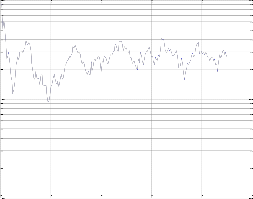
10

6 SIMULATION RESULTS
In this chapter, SISO-OFDM and MIMO-OFDM system with 2 transmitter antennas and 1, 2 receiver ones is used for the simulation. The assumed system has a QPSK modulation. The total number of subcarriers, N, is 64and L is the tap of channel.
The simulations in channel estimation in SISO-OFDM and
MIMO-OFDM systems are as follows:
-5
10
-6
10
0 50 100 150 200 250
Fig 5. Synchronization for SISO OFDM systems
-6
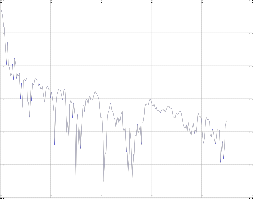
10
0
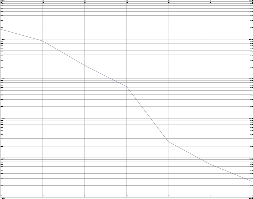
10
-8
10
-1
10
-10
10
-2
10
-12
10
-3 -14
10
10-4 10
-16
-5
10
0 5 10 15 20 25 30
SNR
-18
10
0 50 100 150 200 250
Fig 3. CFO estimation for SISO-OFDM systems with MLE algorithm, L=5
Fig 6. Joint channel estimation and synchronization for SISO-OFDM
systems
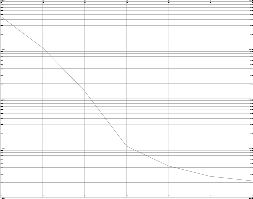
-1
-2
10
-3
10
-4
10
-5
10
0 5 10 15 20 25 30
250
200
150
100
50
0
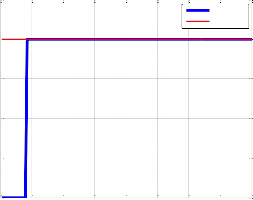
frequency offset estimation from 802.11a short preamble estimated
actual
0 20 40 60 80 100 120 140 160 sample number,n
SNR
Fig 4. CFO estimation for 2*2 MIMO-OFDM systems with MLE
algorithm, L=4
Fig 7. Plot of frequency offset estimate using 802.11a short preamble
Fig 7 as can be observed starting from sample number 17 and till samples number 160(8 the frequency offset estimate is available. For improving accuracy in the presence of noise, typically the output
the frequency offset estimate is available. For improving accuracy in the presence of noise, typically the output  is accumulated prior to computation of angle.
is accumulated prior to computation of angle.
IJSER © 2012 http://www.ijser.org
The research paper published by IJSER journal is about A technique for Carrier frequency offset estimation in OFDM- based systems for Frequency-Selective Fading Channels 5
ISSN 2229-5518
7 CONCLUSION
Estimation of channel coefficients and synchronization parameters are two main challenges in realization of MIMO- OFDM systems which are practical. In almost all published references till no, estimation of cannel coefficients is done with the assumption of total frequency synchronously of transmitter and receiver. The created frequency synchronously between transmitter and receiver, in practice, is always exposed to risk due to presence of factors such as Doppler phenomenon and phase noise. Therefore for exact estimation of fading channel status, it’s necessary to keep the created frequency synchronously between transmitter and receiver, uninterrupted.
An algorithm for maximum likelihood estimate (MLE) of
frequency offset using the dft values of a repeated data symbol has been presented. It has been shown that for small error in the estimate is conditionally unbiased and is the sense that the variance is inversely proportional to the number of the carriers in the OFDM signal. Furthermore, both the signal values and the ICI, contribute coherently to the estimate so that it is possible to obtain very accurate estimates even when the offset is too great, that is there is too much ICI to demodulate the data values. Since the estimate error depends only on total symbol energy, the algorithm works well in the multipath channels.
REFERENCES
[1] G. L. Stuber, J. R. Barry, S. W. McLaughlin, Y. Li, M. A. Ingram, and T.G. Pratt, "Broadband MIMO–OFDM wireless communications, " in Proc. IEEE, Feb. 2004, vol. 92, pp. 271-294.
[2] Darryl Dexu Lin, Ryan A. Pacheco, Teng Joon Lim and Dimitrios Hatzinakos'" Joint Estimation of Channel Response, Frequency Offset, and Phase Noise in OFDM",IEEE Trans. On Signal Processing , VOL. 54, No. 9, Sep. 2006.
[3] Y. Li, J. Winters, and N. Sollenberger, “MIMO-OFDM for wireless communications: signal detection with enhanced channel estimation,”IEEE Trans. Commun., vol. 50, no. 9, pp. 1471–1477, Sept.
2002.
[4] H. Bolcskei, “MIMO-OFDM wireless systems: basics, perspectives, and challenges,” IEEE Wireless Commun., vol. 13, no. 4, pp. 31–37, Aug.2006.
[5] T. Schmidl and D. Cox, “Robust frequency and timing synchronization for OFDM,” IEEE Trans. Commun., vol. 45, no. 12, pp. 1613–1621,Dec. 1997.
[6] Z. Zhang, M. Zhao, H. Zhou, Y. Liu, and J. Gao, “Frequency offset estimation with fast acquisition in OFDM system,” IEEE Commun. Lett.,vol. 8, no. 3, pp. 171–173, Mar. 2004.
[7] Z. Zhang, W. Jiang, H. Zhou, Y. Liu, and J. Gao, “High accuracy frequency offset correction with adjustable acquisition range in OFDMsystems,” IEEE Trans. Wireless Commun., vol. 4, no. 1, pp. 228–
237,Jan. 2005.
[8] G. J. Foschini and M. Gans, “On limits of wireless communications in a fading environment when using multiple antennas,” Wireless Pers. Commun., vol. 6, pp. 311–355, March 1998.
[9] A. N. Mody, and G. L. Stüber, “Synchronization for MIMO OFDM systems,” in Proc. IEEE Global Commun. Conf., vol. 1, pp.509–513, Nov 2001.
[10] A. N. Mody, and G. L. Stuber, “Receiver implementation for a MIMO OFDM system,” IEEE Global Telecommunications Conference, vol. 1, pp. 716-720, 17-21 Nov 2002.
[11] T. Schmidl, and D. Cox, “Robust frequency and timing synchronization for OFDM,” IEEE Trans. Commun., vol. 45, pp. 1613-
1621, Dec 1997.
[12] A. van Zelst, and Tim C.W. Schenk, “Implementation of a MIMO OFDM-Based Wireless LAN System”, IEEE Transactions on Signal Processing, vol. 52, No. 2, pp. 432- 438, Feb 2004.
[13] M. Speth, S.A. Fechtel, G. Fock, and H. Meyr, “Optimum Receiver Design for Wireless Broadband Systems Using OFDM, Part I,” IEEE Trans. Communications, vol. 47, No. 11, pp. 1668-1677, Nov. 1999.
[14] F. Classen, and H. Meyr, “Synchronization algorithms for an OFDM system for mobile communication,” in Codierung f¨ur Quelle, Kanal und U¨ bertragung: ITGFachbericht 130, Mu¨nchen. Berlin Offenbach: VDE-Verlag, ITG, pp. 105-114, Oct. 1994.
[15] F. Daffara, and O. Adami, “A novel carrier recovery technique for
orthogonal multicarrier systems,” Eur. Trans. Telecommun., vol. 8, no.
4, pp. 323-334, July 1996.
[16] ETSI, “Radio broadcast systems; digital audio broadcasting (DAB) to mobile, portable and fixed receivers: Final draft pr ETS 300 401,” European Telecommunications Standards Institute, Tech. Rep., Nov.
1994.
[17] T. Keller, and L. Hanzo, “Orthogonal frequency division multiplex synchronization techniques for wireless local area networks,” in Proc. IEEE Int. Symp. Personal, Indoor, and Mobile Radio Communications, pp. 963-967, 1996.
[18] U. Lambrette, M. Speth, and H. Meyr, “OFDM burst frequency synchronization based on single carrier training data,” IEEE Commun. Lett., vol. 1, pp. 46-48, Mar. 1997.
[19] T. Schmidl, and D. Cox, “Robust frequency and timing synchronization for OFDM,” IEEE Trans. Commun., vol. 45, pp. 1613-
1621, Dec. 1997.
IJSER © 2012 http://www.ijser.org






